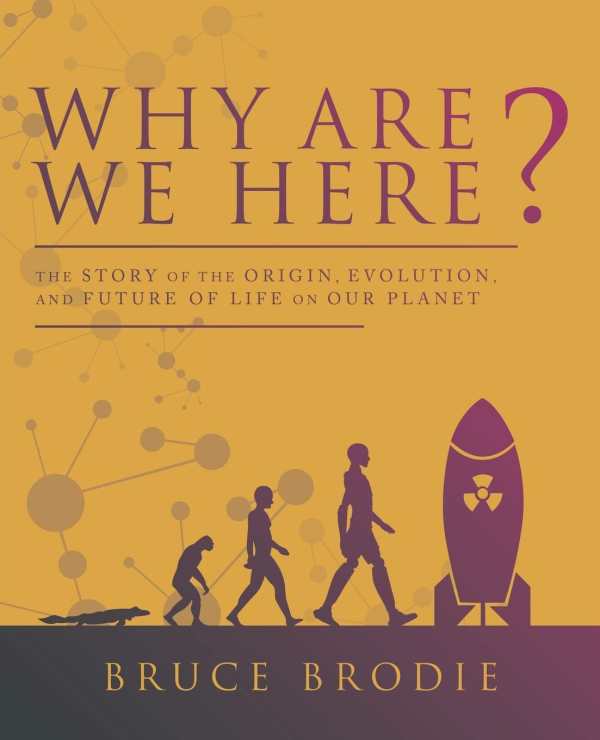Why Are We Here?
The Story of the Origin, Evolution, and Future of Life on Our Planet
Why Are We Here? synthesizes interdisciplinary sciences to explain how terrestrial life developed and what might threaten it in the future.
Bruce Brodie’s fascinating Why Are We Here? sweeps the origin, evolution, and future of life on Earth from a scientific perspective.
Beginning with a presentation of Darwin’s theories, the book integrates the work of disciplines including geology, biochemistry, paleoanthropology, evolutionary psychology, and neuroscience as it progresses toward an opinionated exploration of potential risks to life on Earth. It explores ancient biochemical processes that started in hydrothermal vents deep in the ocean and nods to interdependence between organisms, noting that “all living things have been deeply dependent on one another since the dawn of evolution of life on our planet.”
The book also covers subjects like the evolution of the eye and other organ systems, elucidating differences between contingent and convergent evolution. It moves from development in the sea to development on land to illustrate evolutionary links between species; considers human evolution; and explores modern and post-modern threats to life, including climate change, artificial intelligence, and extraterrestrial life forms.
Synthesizing diverse disciplines, the book ably explains the basics, starting at the mineral level. It blurs distinctions between Earth and life sciences and argues that mass extinction makes room for new life and species diversification. The book’s middle chapters are its most cross disciplinary and best explained, detailing transitions from algae in the ocean to land and multicellular organisms, the evolution of the dinosaurs, and mass extinctions and their sequelae.
The book is less successful when it comes to its incorporation of social sciences and its discussions of modern technology. In doing this work, it addresses important topics, including the risks and benefits of self-sacrifice for group survival and the science behind climate change. But it also forwards opinions regarding how humans should move forward in a repetitive way, undermining its previous work. Its focus on genetic engineering, nanotechnology, AI, and possibilities of extraterrestrial life rest in conjectures and are without the rigorous analysis shown earlier.
Interesting epigraphs begin each chapter, drawn from writers as disparate as Charles Darwin, Richard Dawkins, and Kurt Vonnegut, while black-and-white photographs help to emphasize important points within the text. A comprehensive glossary, reference list, and index round this work out.
Why Are We Here? synthesizes interdisciplinary sciences to describe the evolution of life on Earth, working toward interesting discussions of current and potential existential threats.
Reviewed by
Lisa Alexia
Disclosure: This article is not an endorsement, but a review. The publisher of this book provided free copies of the book and paid a small fee to have their book reviewed by a professional reviewer. Foreword Reviews and Clarion Reviews make no guarantee that the publisher will receive a positive review. Foreword Magazine, Inc. is disclosing this in accordance with the Federal Trade Commission’s 16 CFR, Part 255.

